The trattorias, slaughterhouses and ‘fifth-quarter’ food that fuels modern Roman cuisine
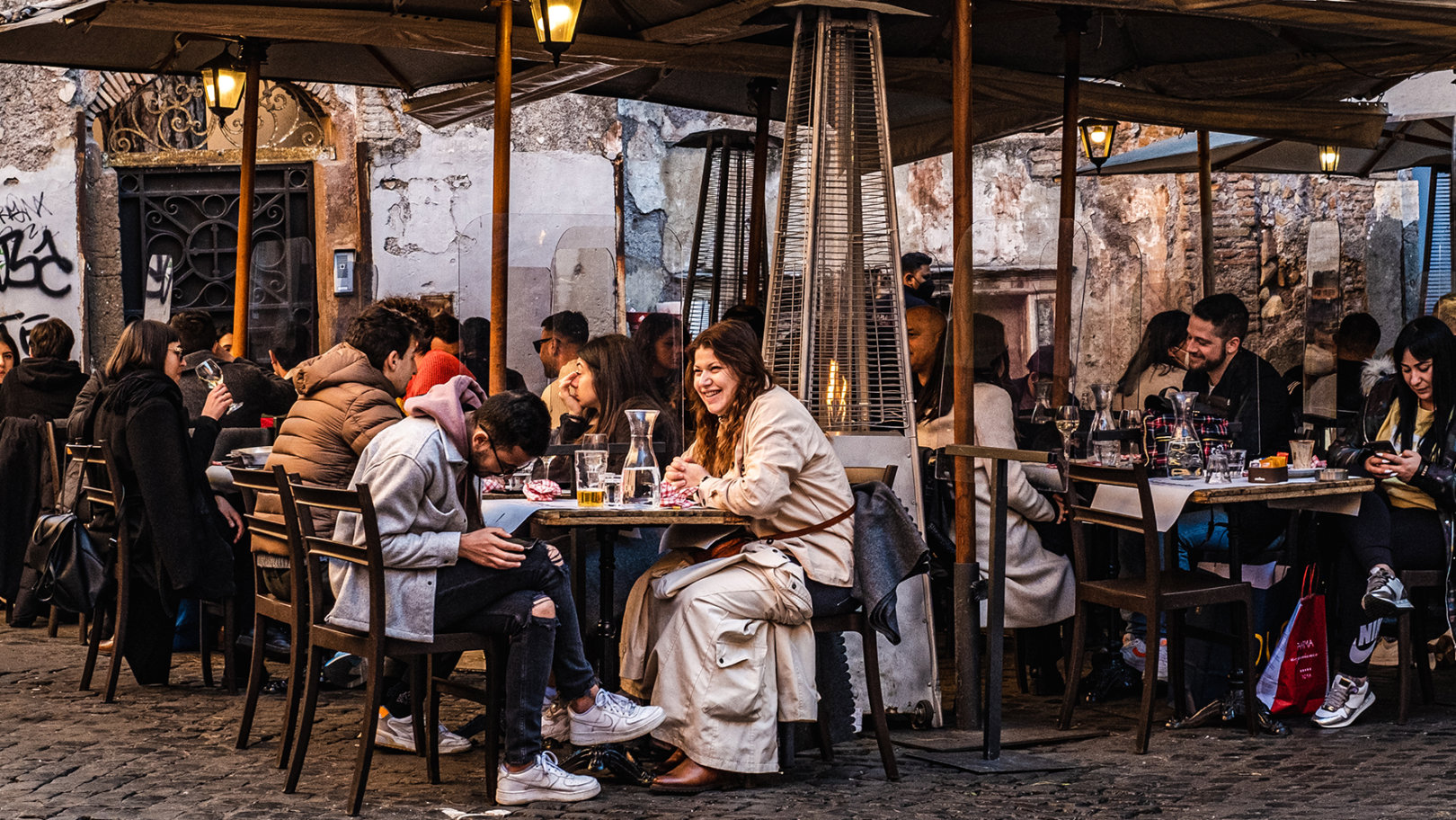
I’d come to Italy’s capital with an appetite for the Grand Four – carbonara, cacio e pepe, gricia and amatriciana, the holy quaternity of Roman pasta dishes. But, naturally, I go off menu at the very first opportunity.
“Pajata?” the waiter’s voice offers, breaking through the silvery Italian chatter. I nod as a plate of handmade rigatoni, sluiced with calf’s intestine, is placed in front of me.
When Giulia Verdinelli – a photographer, gourmand, friend and Roman guide – saw pajata on the menu of Nonna Betta there was no turning back: “It’s an absolute classic.”
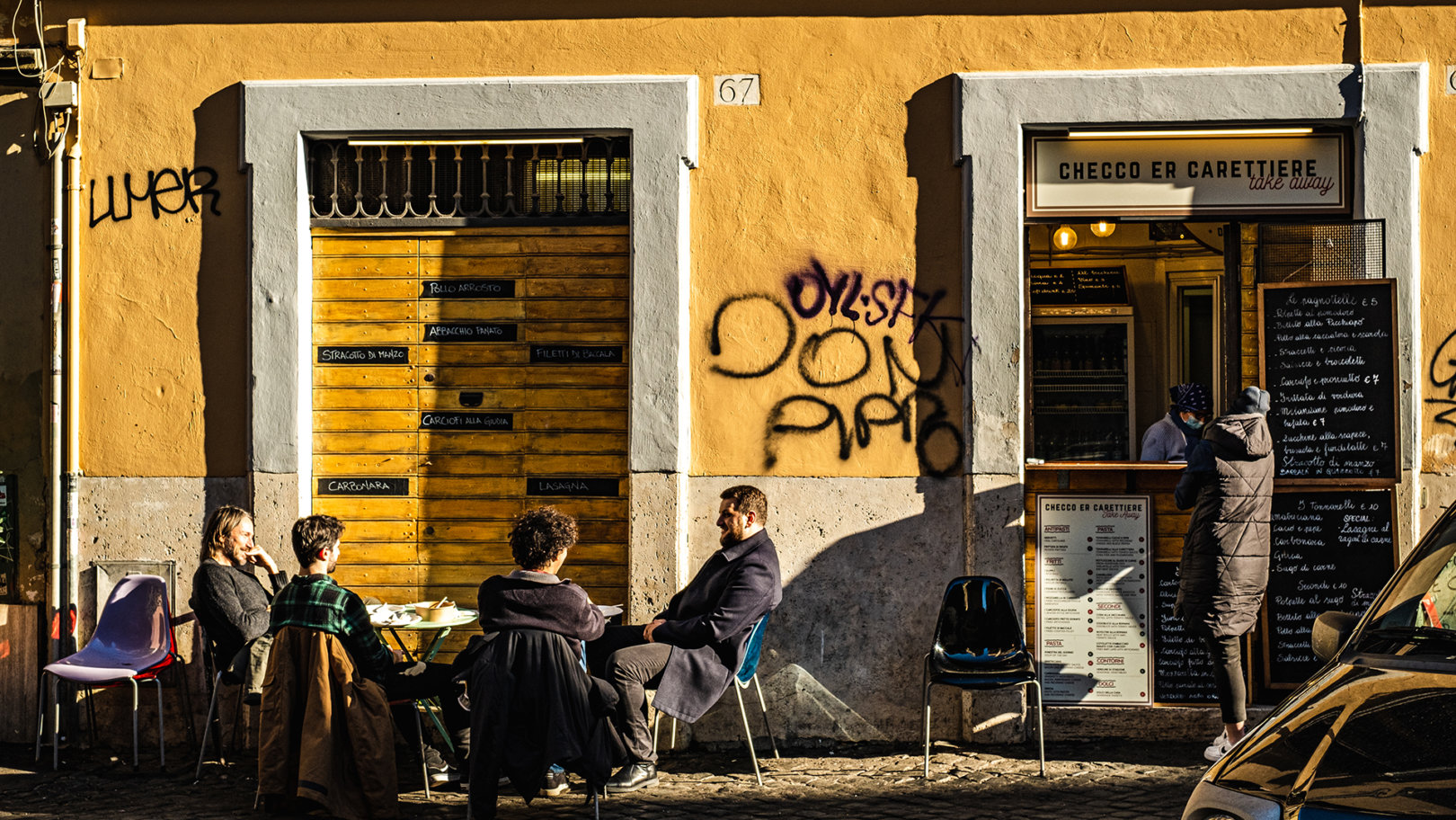
I’d come to Rome in search of the ‘Grand Four’ pastas
Dedicated to classic Roman-Jewish cuisine, the walls of Nonna Betta are covered with frescos that depict everyday scenes from the Roman ghetto: a young boy picking scattered fruit, a girl carrying a woven basket on her head.
Pope Paul IV introduced the separation in 1555, confining Roman-Jews to a single neighbourhood, Claustro degli Ebrei, later known as the Roman Ghetto.
“The Jewish quarter is also the best place to sample carciofi alla giudia,” Giulia says, slowly cutting into a hot, crispy artichoke, fried to a golden perfection in olive oil in line with Betta’s family recipe.
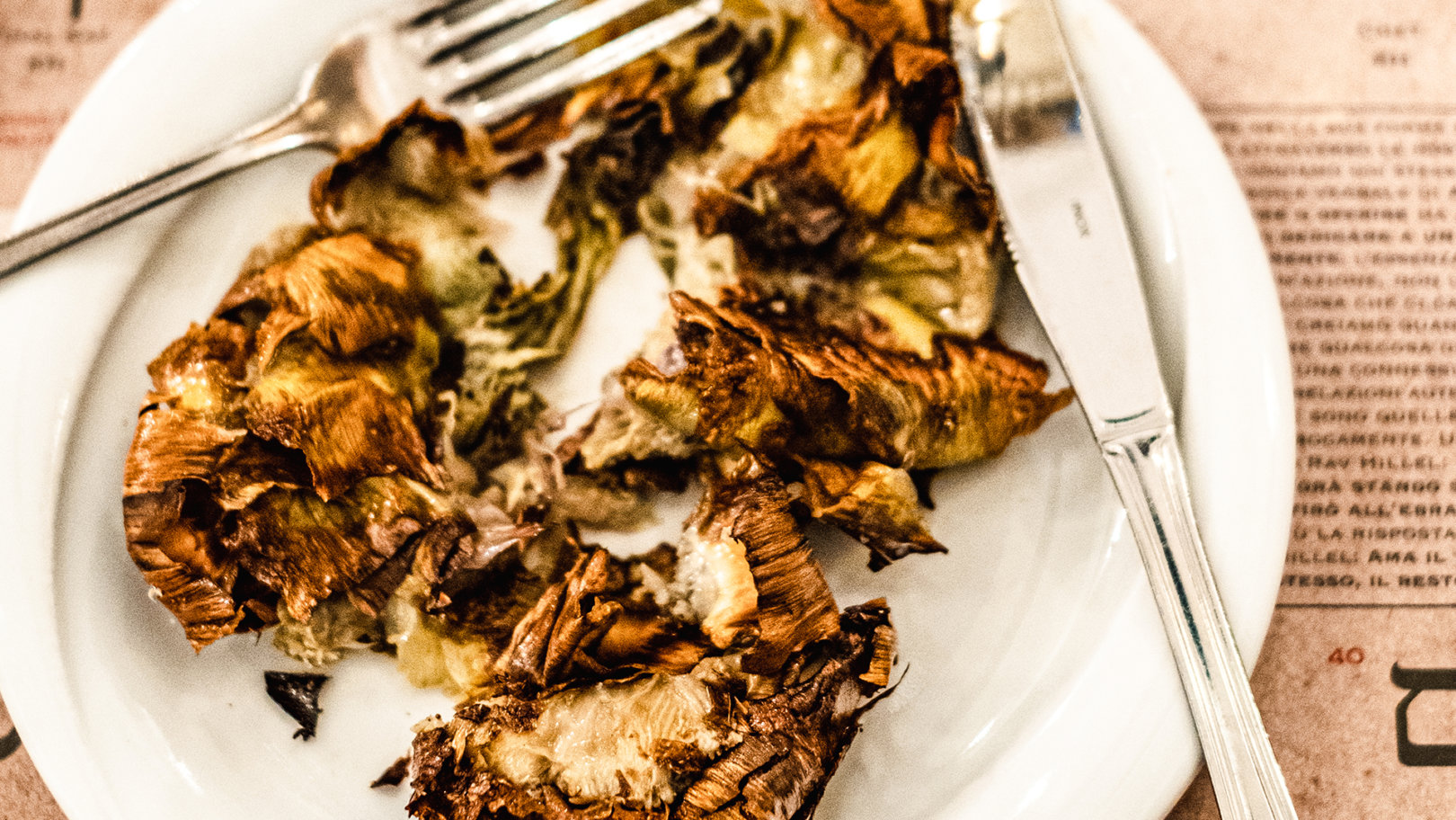
We cut into golden artichoke – cooked to Betta’s family recipe
“My grandmother fried the artichokes twice: first at a lower temperature, to open the leaves, then in hot oil, to make them nice and crispy,” the restaurant’s owner, Umberto Pavoncello, says.
“I remember her, wearing an apron, seated in the middle of our small kitchen with a massive basket of artichokes, removing the tough outer leaves and casually tossing them on the floor”. Nonna Betta specialises in Cucina Giudaico-Romanesca, where Roman recipes are filtered through kosher rules.
Because three of the four famous Roman pasta dishes – gricia, amatriciana and carbonara – are based on non-kosher guanciale (cured pork jowls or cheeks), Betta substituted the forbidden ingredient with chopped carne secca (dried salty beef), and sometimes added chopped artichokes for additional flavour instead.
“These recipes were born out of frustration,” Umberto smiles. “Unable to eat pork, Roman-Jews tried to achieve something as close to the original as possible.”
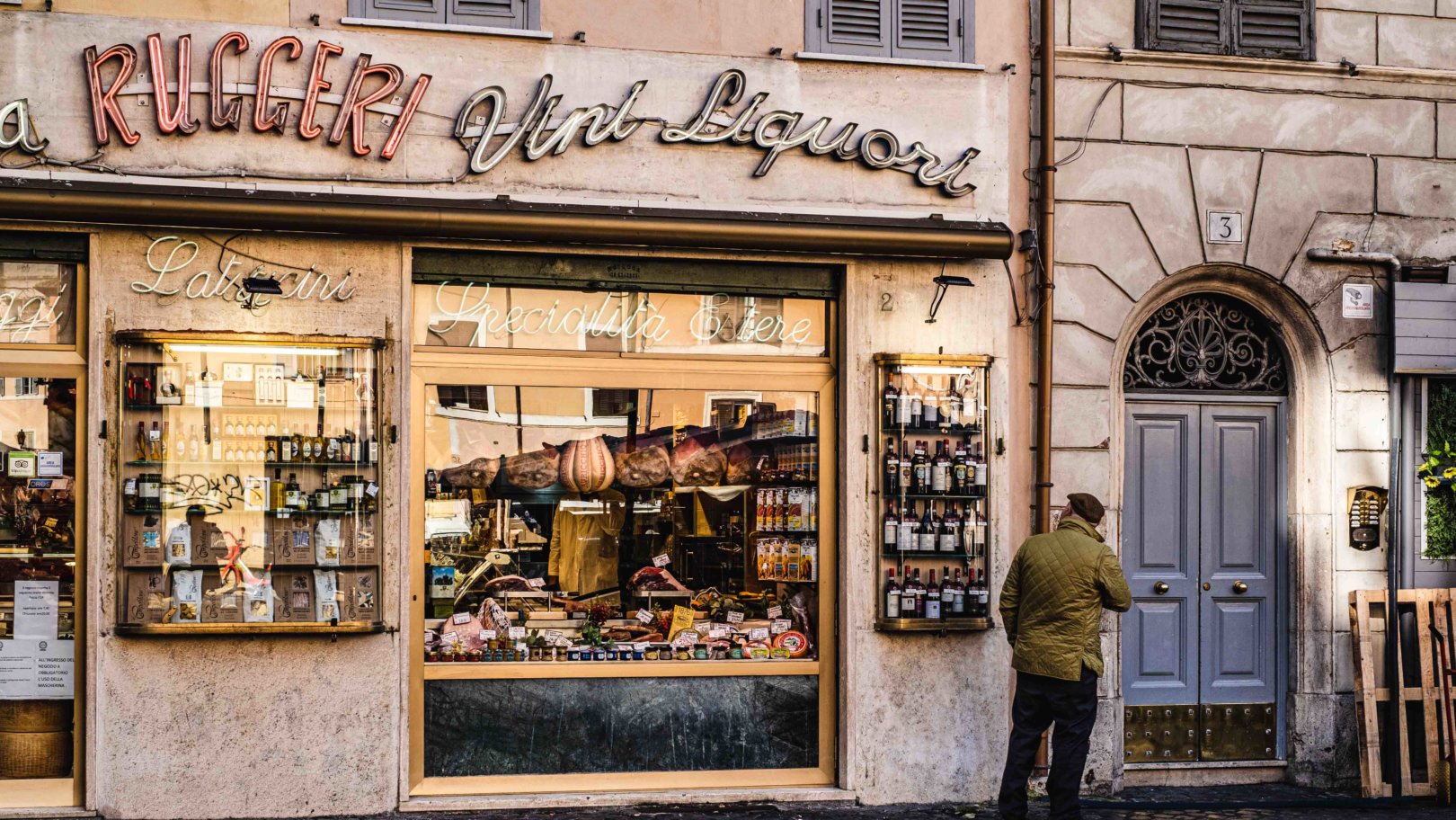
Unable to eat pork, Roman-Jews created recipes out of frustration
For typical Roman cooking, I head for the trattorias: ubiquitous, informal places filled with Roman chatter, fluorescent lights and paper tablecloths, quickly changed after each guest. These family-run restaurants can be found all across Italy, but are especially important to the culinary culture of the capital.
The menu should offer a variety of Roman dishes: gnocchi alla Romana (made with semolina rather than potatoes and traditionally served in Roman homes on Thursdays); artichokes (Jewish-style or alla Romana, cooked in wine with parsley, mint and garlic); and supplì, of course…
The most traditional of these hot, crispy croquettes, supplì al telefono, are made by frying breaded balls of tomato risotto. When pulled apart, the stringy melted mozzarella – hidden inside the rice – has the resemblance of old-school telephone wires.
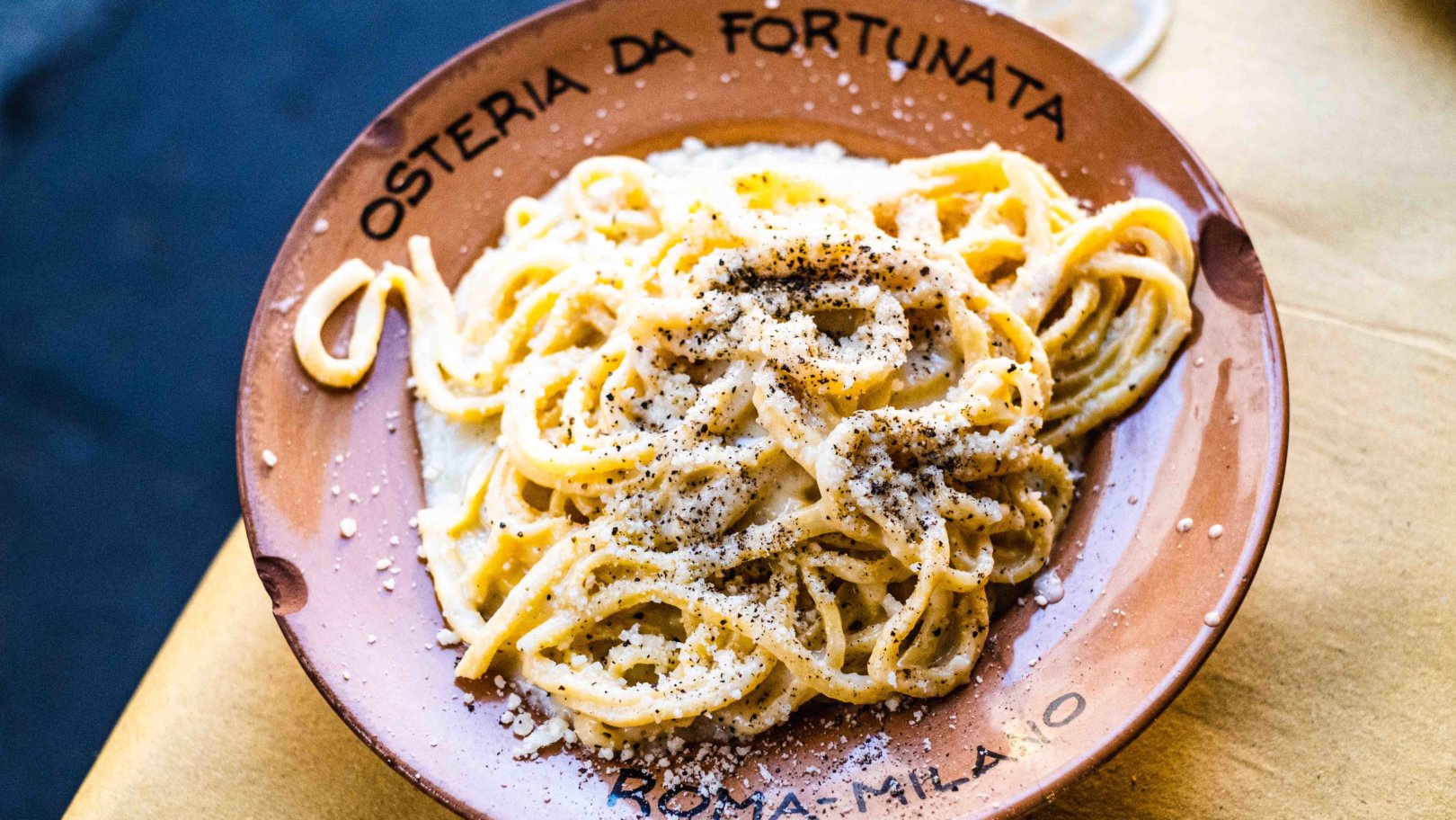
At Osteria da Fortunata, I finally get my hands on cacio e pepe
Osteria da Fortunata near Campo di Fiori ticks all the boxes for me. There’s even a traditional pastaia (pasta maker), sitting in the window and swiftly rolling out pasta dough to cut narrow ribbons of tagliolini.
I eat them covered in an emulsion of piquant pecorino and spicy black pepper, finally getting my hands on one of the Grand Four: cacio e pepe.
Three of the four famed Roman pastas are attributed to shepherds, who carried cured pork and aged sheep cheese as provisions; both long-lasting and easy to transport.
They cooked pasta over a fire and mixed it with cheese and black pepper for cacio e pepe, or fried guanciale, pepper and pecorino to make pasta alla gricia. When tomatoes made it to the Italian peninsula in the mid-1500s – imported from South America by Spain – they were added to the sauce, creating amatriciana.
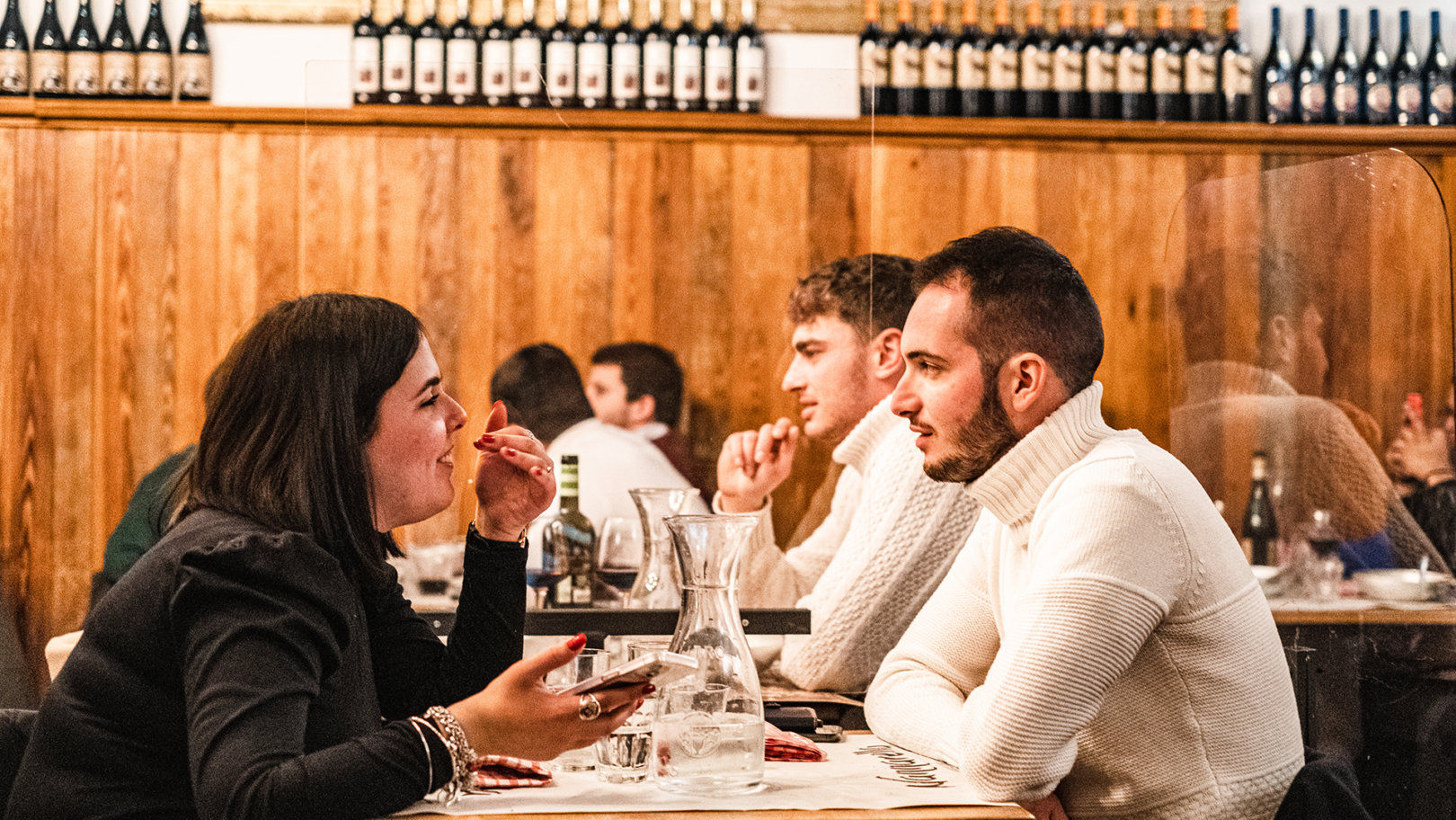
We visit a lively trattoria in bohemian Trastevere
The origins of carbonara are the least certain. Some sources mention charcoal burners – known as carbonai – and their lunch breaks in the woods. Others point at powdered eggs and bacon from American military rations during the liberation of Rome in 1944.
One thing is for sure: “There’s no cream in carbonara,” Giulia says, suddenly serious. “Guanciale, pecorino Romano, eggs and pepper. That’s it”.
At Tonnarello – a lively trattoria in the bohemian Trastevere neighbourhood – the tonnarelli alla carbonara is served in a small pan, with a solid portion of guanciale, lots of black pepper and no trace of cream.
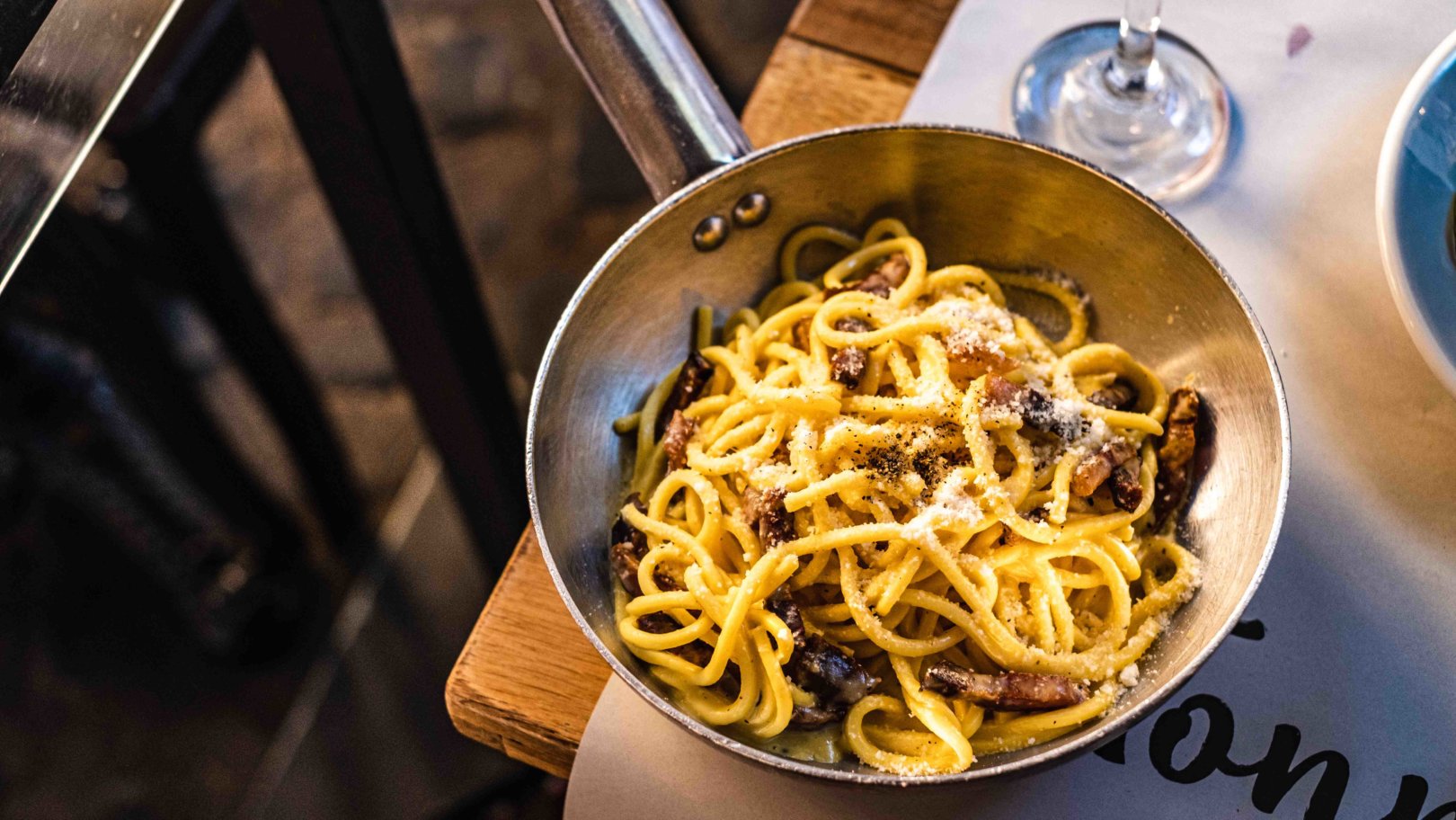
Romans don’t waste anything. Nose-to-tail dining is the norm
Next, Giulia points at a platter of thin veal cutlets, fried with fresh sage leaves and slices of prosciutto, then cooked in a fragrant sauce of white wine and butter.
This dish, saltimbocca alla Romana, contrary to its name, was actually invented in Brescia, but is now nonetheless an important part of Roman culinary canon. “My mother used to make this all the time,” she says.
“Her other go-to was trippa alla Romana (tripe). Romans don’t waste anything, nose-to-tail cooking is a long-running practice.”
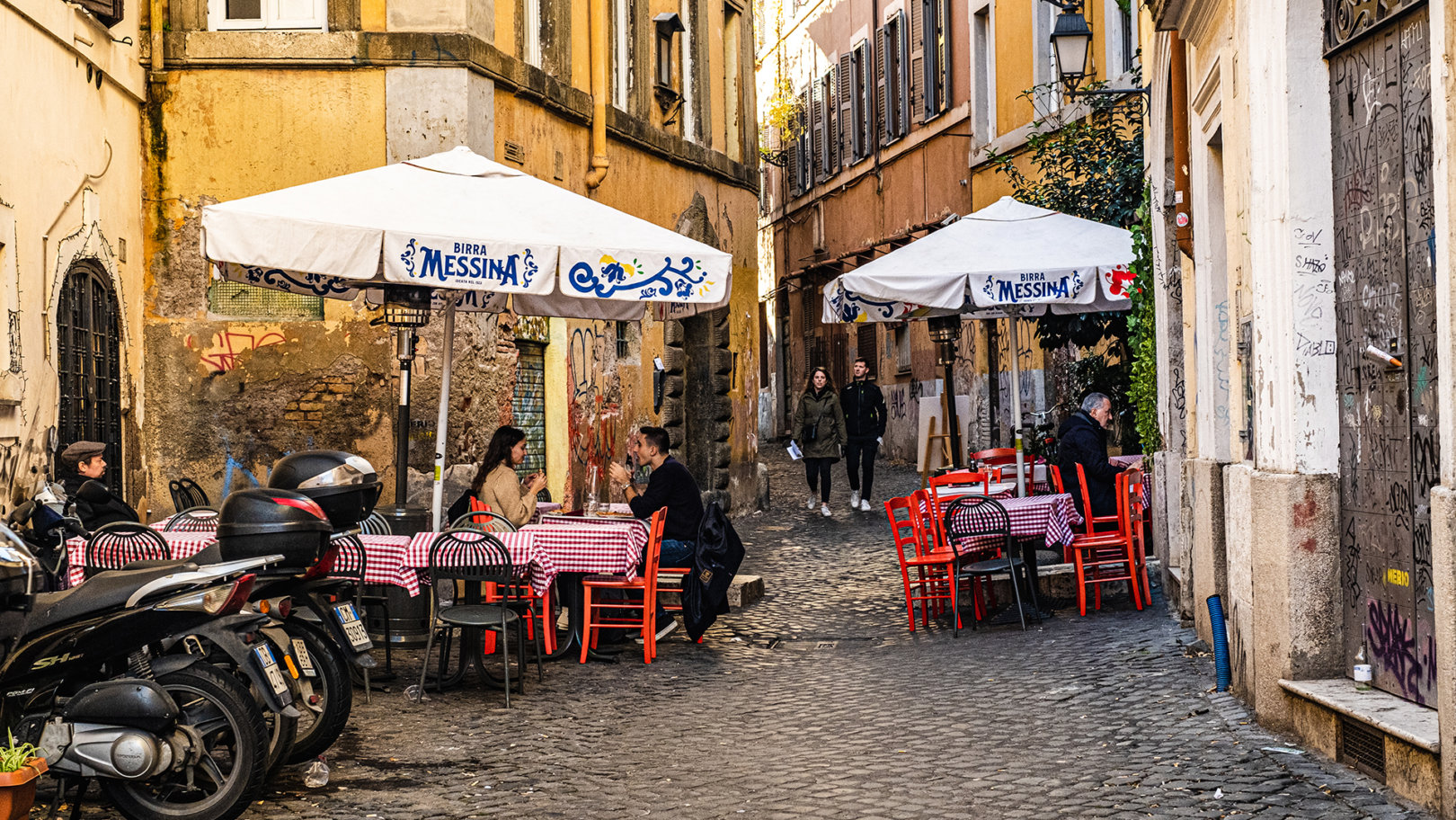
Fifth-quarter cooking was once considered the food of the poor
The tradition of quinto quarto (literally the ‘fifth quarter’, referring to an animal’s oft-forgotten offal) is connected to the district of Testaccio, where a large-scale slaughterhouse operated from the end of 19th century until the 1970s.
Here the ‘fifth quarter’ was whatever was left after the slaughter: tails, brawn, the lot. Once considered food of the poor, quinto quarto fuels modern Roman cooking today, from old-school trattorias to contemporary restaurants.
Trippa alla Romana, cooked in rich tomato sauce and sprinkled with fresh mint, makes an appearance at Trapizzino – a modern culinary spot by Stefano Callegari, who worked as a flight attendant for 15 years, before returning to Rome to pursue his passion for pizza.
He invented a trapizzino: a magical cross between pizza and tramezzino, a small, triangle sandwich served in Italian bars. At Trapizzino, triangular cases of pizza dough enclose numerous fillings, like boiled beef tongue with a sauce of parsley and capers, or coratella e carciofi: a stew of artichokes and lamb coratella (hearts, lungs and liver).
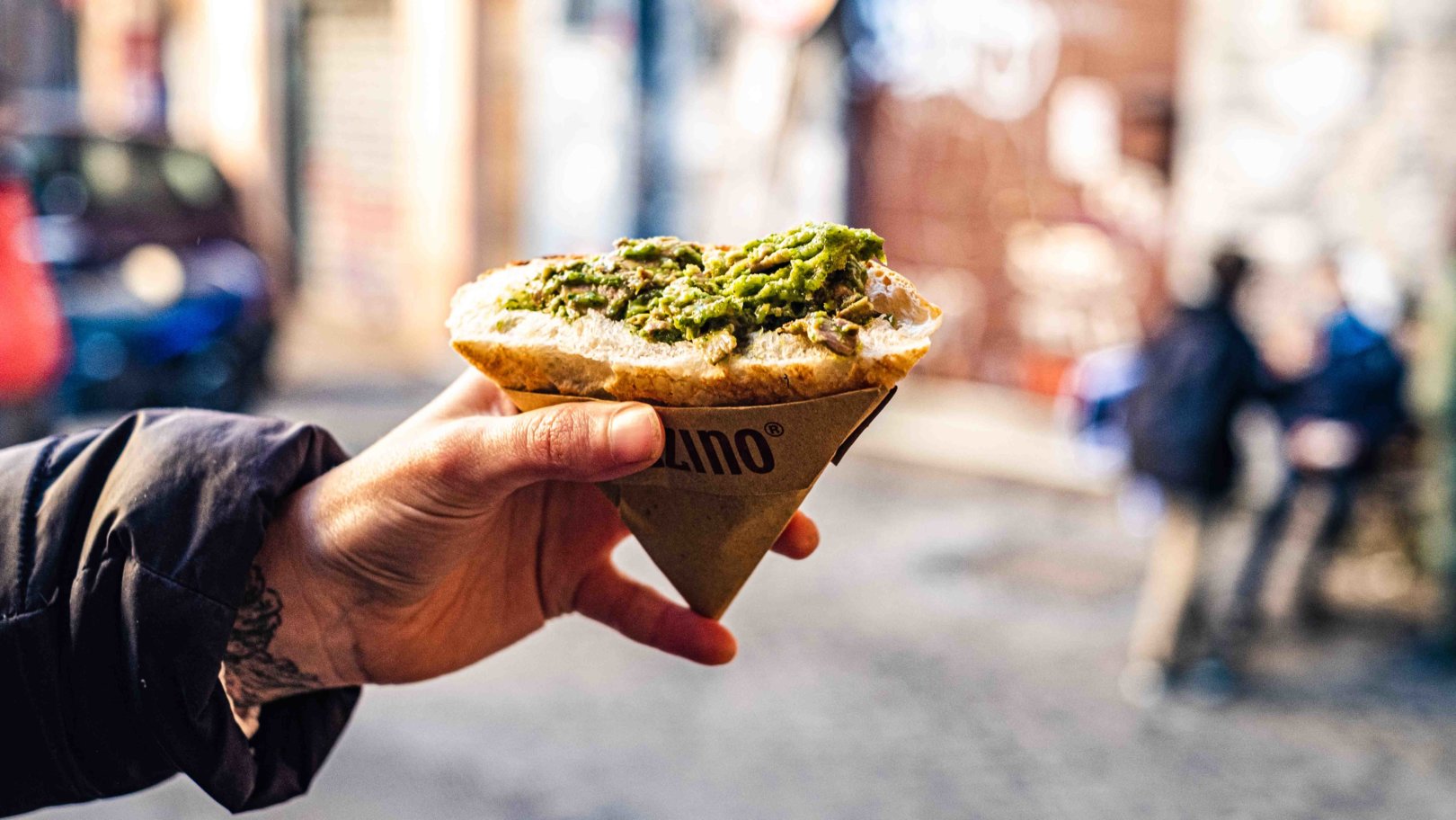
A ‘trapizzino’ is a magical cross between pizza and a small, triangle sandwich
Back at Tonnarello, we try coda alla vaccinara – an oxtail stew, slowly cooked with tomatoes, celery and red wine. Rome’s vaccinari (butchers) created the dish in an attempt to use cow tails that were left after skinning.
Turning the hard, bony tail into a tender delicacy requires time and patience. At Tonarello, the meat falls off the bone and tastes great with creamy mashed potatoes and a side dish of cicoria alla Romana – chicory with slightly bitter dandelion greens, sautéed with flakes of spicy peperoncino (chilli peppers).
Giulia grabs the meat with her hands to suck the bone marrow: “This is how any self-respecting Roman would eat it.” She interrupts to ask the waiter for a basket of bread to mop up the last of the sauce. “The best Roman dishes derive from cucina povera (poor cuisine),” she says, sweeping a small piece of white bread across her plate. “Cow’s tail and some wild leaves, that’s all this is…” True, I think, it might have started that way. But what we’re eating now is a feast for kings.
Stage your own culinary adventure by booking Flash Pack’s two new Italy trips, including week-long trips in Northern Italy and Southern Italy.
Got a story or adventure that could inspire a solo traveller like you? Tag @flashpack on social or email [email protected] to be featured.
Images: Karolina Wiercigroch








